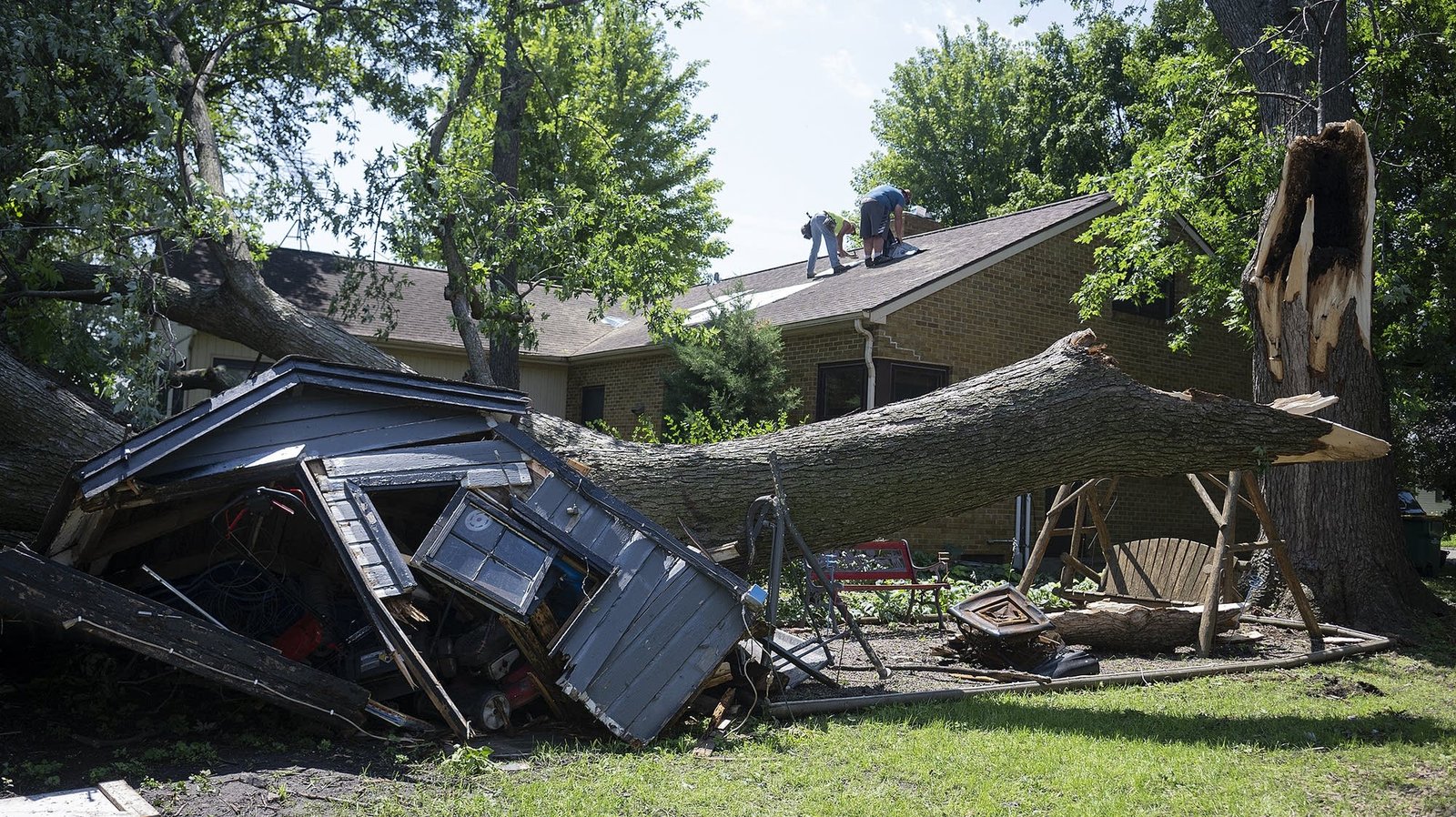
The harsh weather represents a challenge for emergency managers
While Minnesota’s cities and provinces deal with a lot of harsh weather this summer, emergency managers are struggling to respond – especially with federal financing discounts for their budgets, and the infrastructure of aging that did not keep pace with the changing climate.
This summer was especially difficult for some provinces. In Lac Qui Parle Province, at least 100 miles were washed from the town’s roads and floods in June 2025. The provincial emergency department said it cost taxpayers about $ 268,000 as compensation.
“We have obtained seven warnings from Hurricane this year,” said Blin Johnson, Director of the Emergency Department in Lak Barle Province. “A lot of counting.
Johnson, who is also working in the Minnesota Emergency Managers Association, said it is getting worse not only for Lac Qui Parle, but for other provinces at the state level.
He said: “It seems that every summer now we have a lot of floods, which is also worse than ever.” “Therefore, you really spanned, and really slim as emergency managers. Many of these provinces do not even have full -time software, and we do not have full -time programs at that time because there are financing risks. There is a very little financing there.”
Rain water infrastructure cannot keep up with
They are not just provinces, but also cities. Rain water infrastructure does not aim to keep up with the intensity and frequent rainfall. Most of the rainwater infrastructure in the state has been built “several decades ago” and is designed to combat urban floods.
“It has been designed to get water out of the streets quickly and out of the city as quickly as possible,” said Craig Johnson. “They have not been built and may never be built enough enough for the types of rain that we see now as we get three to five inches of rain. Cities are not ready for this level of the rainy event in most of them.”
However, Minnesota tried to help local municipalities meet infrastructure needs. During the 2023 legislative session, the country invested more than $ 100 million in the Climate Flexibility and Infrastructure Provincial Province program for local and tribal governments and about $ 5 million for the local climate grant program.
- out on a limbResidents of a Bildary Province move in insurance claims resulting from fallen trees
- Mankato small companies try to stay standing on his feet After historical floods last year
Craig Johnson, Minnesota Anti -pollution agency, said that these funds use these funds to provide cities by granting planning to assess risks, find options and develop plans for rainwater infrastructure and their ability to withstand antiquities due to climate change.
These dollars also aim to help finance construction projects designed to increase flexibility in the circumstances caused by stormy weather events. Craig Johnson said there was also grants to help develop and reduce the local climate change.
“It is not enough to do everything to do there,” he said. “But this is enough to help cities that are likely get the money they need to behave sooner than it can.
Premium instead of interacting
But federal cuts left provinces like Lac Qui Parle in a difficult place. Blin Johnson said that the province had witnessed about 25 percent of the emergency management performance grant. The federal government provides funds to Minnesota, which the state then takes half of the boxes before distributing the rest to the provinces, as the remaining half needs locally.
For Lac Qui Parle County, Blain Johnson said they have received only $ 15,000 for their total budget instead of $ 20,000, which must also be spent for training, travel, updated plans, etc.
He hopes that the state will fund emergency planning rather than respond to its effects, which it is believed to be more expensive in the long term.
“Why don’t we give priority to preparation and financing, instead of always looking back and paying a lot of money on the damage that occurs?” Blin Johnson added.
There are no state dollars in the province’s emergency management. Blin Johnson said that all these dollars come directly from the federal level – and there is no relief on the horizon of repeated storms and demands for expectations with less money to work with them.
He said: “It is really difficult to manage (emergency situations) when they happen, recover from it and prepare for the next one.” “Because there is no longer anything there. After that, you see the federal levels that are cut, things are cut. So the positions are threatened, and there is no state financing mechanism at the present time as well.”
This financing deficiency may lead to some difficult decisions of emergency management. The Miniesota Emergency Managers Association said that some provinces may have to solve or unify their services due to budget discounts.
Access to funds comes with strict requirements for use. What, Blin Johnson of the Minnesota Emergency Managers Association, said it becomes costly.
He said: “The financing is slowly cut off, cut and cut into an atmosphere where we face more disasters, the worst disasters and the general expectation is higher than ever.” ))
The MPR News Regina Medina correspondent contributed to this report.













Post Comment